
What Fence For Landscaping
- Landscaping
- December 19, 2023
Are you struggling to find the perfect fence to enhance your landscaping? Look no further. With a variety of styles and materials, choosing the right fence can be overwhelming. But don’t worry, we’ve got you covered. In this article, we’ll explore the importance of a well-chosen fence and help you find the perfect one for your landscaping needs.
Why Is Landscaping Important?
Contents
Landscaping plays a vital role for several reasons. It not only enhances the aesthetics of a property but also increases its value and contributes to environmental conservation. Additionally, landscaping provides a peaceful and serene environment for relaxation and recreation. Interestingly, it has been found that landscaping can reduce noise levels by up to 50%, emphasizing its significant impact on creating tranquil outdoor spaces.
So why is landscaping important? Let’s explore the many benefits it brings.
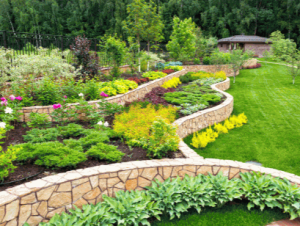
What Are The Types Of Fences For Landscaping?
When it comes to landscaping your yard, one important aspect to consider is the type of fence you will use. There are various options available, each with its own unique features and benefits. In this section, we will discuss the different types of fences commonly used for landscaping, including wood, vinyl, aluminum, chain link, and wrought iron. By understanding the characteristics of each type, you can choose the best fence for your specific landscaping needs.
Find out more: Is Fencing Considered Landscaping
1. Wood Fences
When considering wood fences for landscaping, follow these steps:
- Plan the Fence Design: Determine the height, style, and layout.
- Choose the Right Wood: Opt for durable, weather-resistant wood like cedar or redwood.
- Prepare the Ground: Clear the area where the fence will be installed.
- Install the Posts: Set the posts securely in the ground.
- Attach the Boards: Secure the boards to the posts, ensuring a uniform look.
For a timeless and natural look, wood fences can enhance the appeal and functionality of your outdoor space.
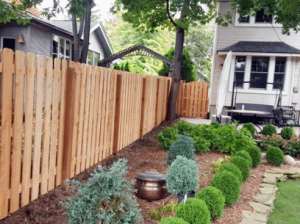
2. Vinyl Fences
- Assess Area: Measure the area accurately where the vinyl fence will be installed.
- Choose Style: Select a vinyl fence style that complements the landscape and meets your needs, making sure to consider the various options available for vinyl fences.
- Prepare Area: Clear the area of any obstructions and ensure the ground is level for installation.
- Install Posts: Set the vinyl fence posts securely in the ground at the appropriate intervals.
- Assemble Panels: Attach the vinyl panels to the posts, ensuring they are level and secure.
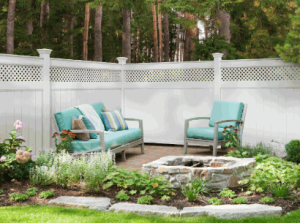
3. Aluminum Fences
- When deciding on aluminum fences, it’s important to consider your landscaping needs and style to ensure they align with your aesthetic and functional requirements.
- Take into account the maintenance and longevity of aluminum fences and how they fit into your long-term landscaping plans.
- Explore the various designs and finishes available for aluminum fences to find the perfect complement to your landscape design and overall property aesthetics.
- Evaluate the cost of aluminum fences compared to other fencing materials, considering the upfront investment and long-term benefits.
Prioritizing durability, aesthetics, and long-term maintenance is key when selecting aluminum fences to enhance your landscaping.
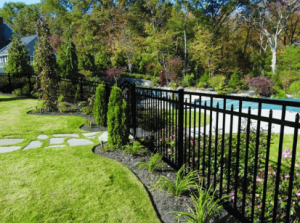
4. Chain Link Fences
- Measure the area: Determine the necessary length and height for the chain link fence.
- Mark the layout: Use stakes and string to outline the perimeter and designate gate locations.
- Dig post holes: Dig holes for the posts, making sure they are deep enough to support the fence.
- Install end, corner, and gate posts: Begin by setting these posts, ensuring they are plumb and firmly in place.
- Attach the rails and fabric: Secure the top and bottom rails to the posts, then unroll the chain link fabric and fasten it to the rails.
- Add the fittings and gates: Install tension bands, brace bands, and other necessary fittings. Attach the gates.
- Tension the fence: Use a fence puller to stretch the chain link fabric and secure it to the posts.
- Secure the fence: Double-check that all components are securely fastened and that the fence is properly tensioned and straight.
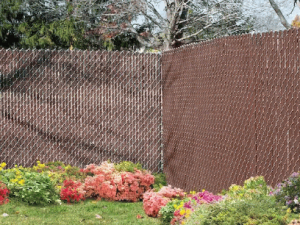
5. Wrought Iron Fences
- Assess Property: Inspect the landscape to identify suitable locations for wrought iron fences.
- Design Selection: Choose a design that complements the property’s aesthetics and landscape theme.
- Measurements: Accurately measure the allocated fence area to ensure precise fitting.
- Material Quality: Select high-quality wrought iron for durability and longevity.
- Installation: Hire professionals for proper installation to ensure stability and security.
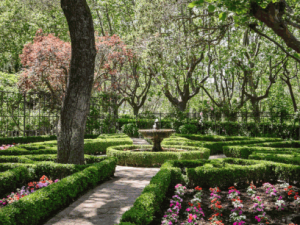
What Are The Factors To Consider When Choosing A Fence For Landscaping?
When it comes to choosing a fence for landscaping, there are several factors to consider in order to make the best decision for your specific needs. In this section, we will discuss the various considerations that should be taken into account before selecting a fence. These include the intended purpose of the fence, privacy needs, maintenance requirements, budget, and any local regulations that may affect your choice. By understanding these factors, you can ensure that your chosen fence not only enhances the aesthetic of your landscape but also meets all of your functional requirements.
1. Purpose Of The Fence
- Determine the specific purpose of the fence, whether it’s for security, privacy, containment, aesthetic enhancement, or a combination of these factors.
2. Privacy Needs
- Evaluate the level of privacy required for your property.
- Consider the height and opacity of the fence to ensure it meets your privacy needs.
- Assess the orientation of the fence panels to maximize privacy.
- Explore options such as lattice or trellis to enhance privacy without compromising aesthetics.
- Consult with neighbors to address shared privacy concerns.
Throughout history, privacy has been a valued concept, influencing architectural designs and property boundaries. For instance, in ancient Rome, wealthy citizens utilized high walls and dense foliage to create secluded spaces within their homes.
3. Maintenance Requirements
- Regular Inspection: To ensure proper maintenance, it is important to inspect the fence regularly for any damage, rot, or rust and address these issues promptly.
- Cleaning: Keep your fence in top condition by regularly cleaning it to remove dirt, debris, and mold that can affect its appearance and structural integrity.
- Repairs: It is crucial to promptly repair any damage, such as loose boards, broken panels, or rust spots, to prevent further deterioration and maintain the fence’s functionality.
- Protective Coating: To extend the lifespan of your fence, it is recommended to apply protective coatings or sealants as per the material’s requirements.
4. Budget
When creating a budget for landscaping, it is important to consider not only the initial cost of the fence but also its long-term maintenance expenses.
While wood fences may be more budget-friendly, they may require more upkeep. On the other hand, aluminum and vinyl fences have low maintenance costs. Chain link fences are a cost-effective option, but they may not provide much privacy. Wrought iron fences may have a higher initial cost, but they are durable in the long run.
It is crucial to keep in mind the financial implications in the long term to make a well-informed decision.
5. Local Regulations
- Before installing a fence, it is important to check local ordinances and homeowner association rules regarding fence height, material, and placement.
- Make sure to obtain any necessary permits or approvals before starting the installation process.
- To avoid any potential legal issues, it is important to have a clear understanding of property lines and easements.
- Be sure to comply with any fence maintenance requirements outlined in local regulations.
- Consulting with neighbors is also recommended to ensure that the fence complies with shared property line rules.
How To Incorporate Fences Into Landscaping Design?
Fences are not only functional, but they can also add a touch of beauty and charm to your landscaping design. In this section, we will discuss how to effectively incorporate fences into your landscaping to enhance the overall aesthetic. From using fences as a decorative element to creating a focal point, we will cover various ways to make the most of your fencing. Additionally, we will explore how fences can be used to define different zones in your outdoor space and how to incorporate plants and flowers to further enhance the beauty of your landscaping.
1. Use Fences As A Decorative Element
- Begin by selecting a fence style that enhances the overall landscaping design.
- Think about incorporating decorative elements, like finials or lattice panels, into the fence design.
- Strategically use lighting to highlight the decorative aspects of the fence, adding visual interest during the evening hours.
2. Create A Focal Point
- Choose a visually striking element such as an ornate gate or a uniquely designed fence panel to create a focal point.
- Position the focal point strategically to draw attention and create visual interest in the landscape.
- Consider using contrasting colors or textures to make the focal point stand out.
- Use lighting to highlight the focal point, especially in the evening or at night.
Consider incorporating a water feature or a sculpture as a focal point to enhance the overall aesthetic appeal of your landscaping design.
3. Use Fences To Define Different Zones
- Separate areas: Utilize fences to create distinct zones for dining, relaxation, and gardening in your landscape design.
- Materials and heights: Choose various fence materials and heights to visually divide your outdoor space into functional areas.
- Directional flow: Direct traffic flow and create a sense of organization by using fences to guide movement throughout the landscape.
Fact: Using fences to define different zones can improve the overall organization and functionality of your outdoor living space.
4. Incorporate Plants And Flowers
- Choose native plants and flowers to ensure they thrive in your local climate and soil conditions.
- Consider the height and spread of the plants to create a balanced and visually appealing landscape.
- Combine different colors, textures, and bloom times to add diversity and interest to the area.
- Integrate plants and flowers along the fence line to soften its appearance and create a seamless connection with the surrounding landscape.


